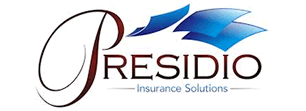As a client advocate and representative, we often research areas of potential liability for our healthcare clients. Often in the course of evaluating exposures to risk, we turn to experts in the legal industry for guidance. The following is an article provided by one such expert in the arena of vicarious liability for employers.
Employer Liability for Acts of Employees, Respondeat Superior
by Andrew H. Covner, Engle Carobini Covner & Coats LLP
Scenario #1: A nurse in your office, while on her morning break, accidentally spills water on the hallway floor leading to the examination rooms. She knows this floor becomes slippery when wet, but continues with her break and forgets to clean up the spill. A short time later, an elderly patient slips, breaks his hip and requires a lengthy and painful rehabilitation. Are you, the employer, vicariously liable to this patient for injuries sustained in this slip and fall accident?
Scenario #2: An ultrasound technician employed by your practice sexually molests a pregnant patient on the pretense that he is performing a routine general pelvic examination. Are you, the employer, vicariously liable to this patient for the physical and emotional injuries suffered by this patient?
An employer can be held to answer for injuries to third persons for the acts of its employees based on two separate theories of liability. The first type of liability is generally known as direct, where the employer’s own acts or failure to act contributed to the causation of an injury suffered by a third person. For example, the negligent hiring, retaining, training or supervising of an employee can result in direct liability of the employer. In Scenario #2, if the employer knew in advance of the incident that the technician had a history of inappropriate behavior with female patients, then the employer could be directly liable for the patient’s injuries.
Respondeat superior is the legal term used to describe a doctrine of vicarious liability under which an employer may be held responsible for the acts of an employee committed within the scope of employment. This doctrine is an exception to the general principle that liability is based on fault. Respondeat superior liability rests on the public policy that it would be unjust for an employer to avoid responsibility for injuries occurring in the course of its business activities. This policy is justified by the employer’s ability to insure against such risks of injury with insurance coverage as a direct cost of doing business.
Respondeat superior applies when the employee’s act or omission (negligent or intentional) occurs within the scope of employment. Importantly, liability may be imposed even if the act in question is a departure from the employee’s official duties or violates the employer’s express policies. Under this rule, then, the employer would be held vicariously liable for the slip and fall accident described in Scenario #1. This result would not be changed by the nurse being on break when she spilled the water, or even if a written office policy required immediate correction of all potentially dangerous conditions observed by employees.
Scenario #2 presents a situation where the doctrine of respondeat superior did not apply. In Lisa M. v. Henry Mayo Newhall Memorial Hospital(1995) 12 Cal.4th 291, vicarious liability the California Supreme Court held that “an intentional tort [here, sexual battery] gives rise to respondeat superior liability only if it is engendered by the employment.” The simple fact that “the employment brought [the technician] and victim together in time and place is not enough.” The Lisa M. court emphasized that an employer is not strictly liable for all actions of its employees during working hours. Although the scope of employment test is quite broad, substantial deviation from employment duties and purposes by the malicious or tortious employee may preclude application of the respondeat superior doctrine.
©Engle Carobini Covner & Coats LLP 2008 – www.ec3law.com
Presidio Insurance Solutions (800)317-6411.
